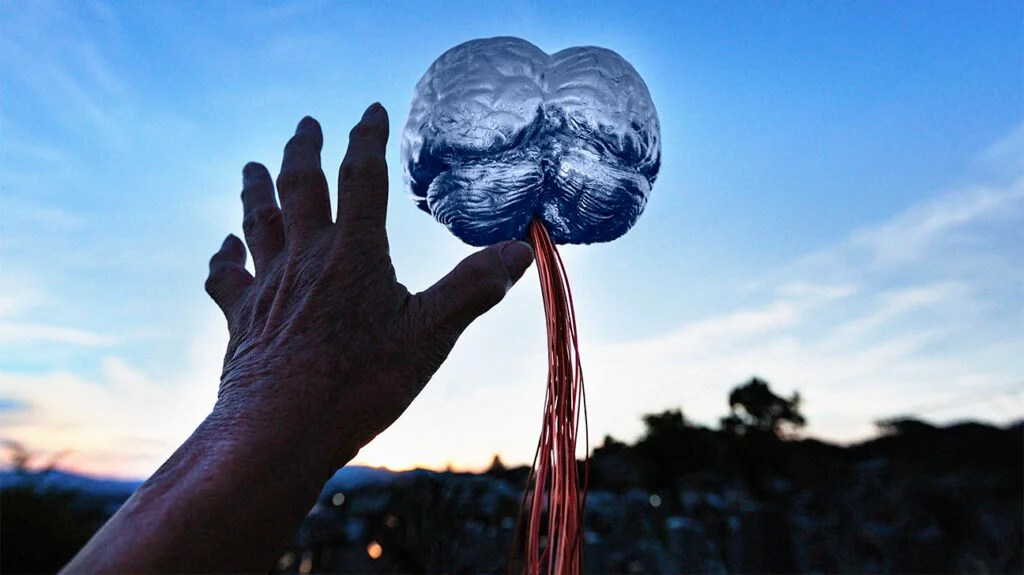Paralysis is the partial or full loss of movement, usually in response to an injury or illness.
Thank you for reading this post, don't forget to subscribe!In the case of spinal cord injuries, two forms of a paralysis are most common:
- Tetraplegia, also known as quadriplegia, involves the complete loss of movement in the torso, limbs, feet, and hands. Typically, the product of an injury high in the spinal cord, tetraplegia is the most debilitating form of paralysis, and may necessitate artificial respiration assistance, in addition to impeding the ability to use the bathroom, walk, sit up, and perform similar tasks without assistance.
- Paraplegia is paralysis below the waist, including both legs. It may interfere with excretory and sexual functioning, in addition to eliminating the ability to walk.
Some patients suffer less severe forms of paralysis, particularly when their injuries are very low in their spinal cords. Brain and nerve injuries can also cause localized paralysis, such as when a brain tumor pushing on a nerve paralyzes a portion of the face.
Types of Paralysis
Complete paralysis is when patient can’t move or control his/her paralyzed muscles at all. Patient also may not be able to feel anything in those muscles.
Partial or incomplete paralysis also called paresis is when patient still have some feeling in, and possibly control over, his paralyzed muscles.
Localized paralysis affects just one specific area, like face, hands, feet, or vocal cords.
Generalized paralysis is more widespread in the body and is grouped by how much of patient’s body is affected. The type usually depends on where the brain or spinal cord is injured.
Monoplegia is a kind of generalized paralysis that affects just one limb.
Diplegia affects the same area on both sides, like both arms, both legs, or both sides of the face.
Hemiplegia affects just one side of the body and is usually caused by a stroke, which damages one side of the brain.
Quadriplegia (or tetraplegia) is when all four limbs are paralyzed, sometimes along with certain organs.
Paraplegia is paralysis from the waist down.
Locked-in syndrome is the rarest and most severe form of paralysis, where a person loses control of all their muscles except the ones that control their eye movements.
Paralysis can be stiff, or spastic when patient’s muscles are tight and jerky. Most patients with cerebral palsy have spastic paralysis. It can also be floppy, or flaccid when your muscles sag and eventually shrink.
Causes of Paralysis
Paralysis is most often caused by strokes, usually from a blocked artery in the neck or brain. It also can be caused by damage to the brain or spinal cord, like what can happen in a car accident or sports injury.
Some kinds of paralysis are caused by certain conditions or diseases linked to specific genes for example:
Demyelinating diseases
These happen when the protective coating around the nerve cells, called the myelin sheath, is damaged over time. That makes it harder for neurons to send signals throughout the body. It weakens patient’s muscles and eventually causes paralysis. There are several demyelinating diseases, but the most common is multiple sclerosis.  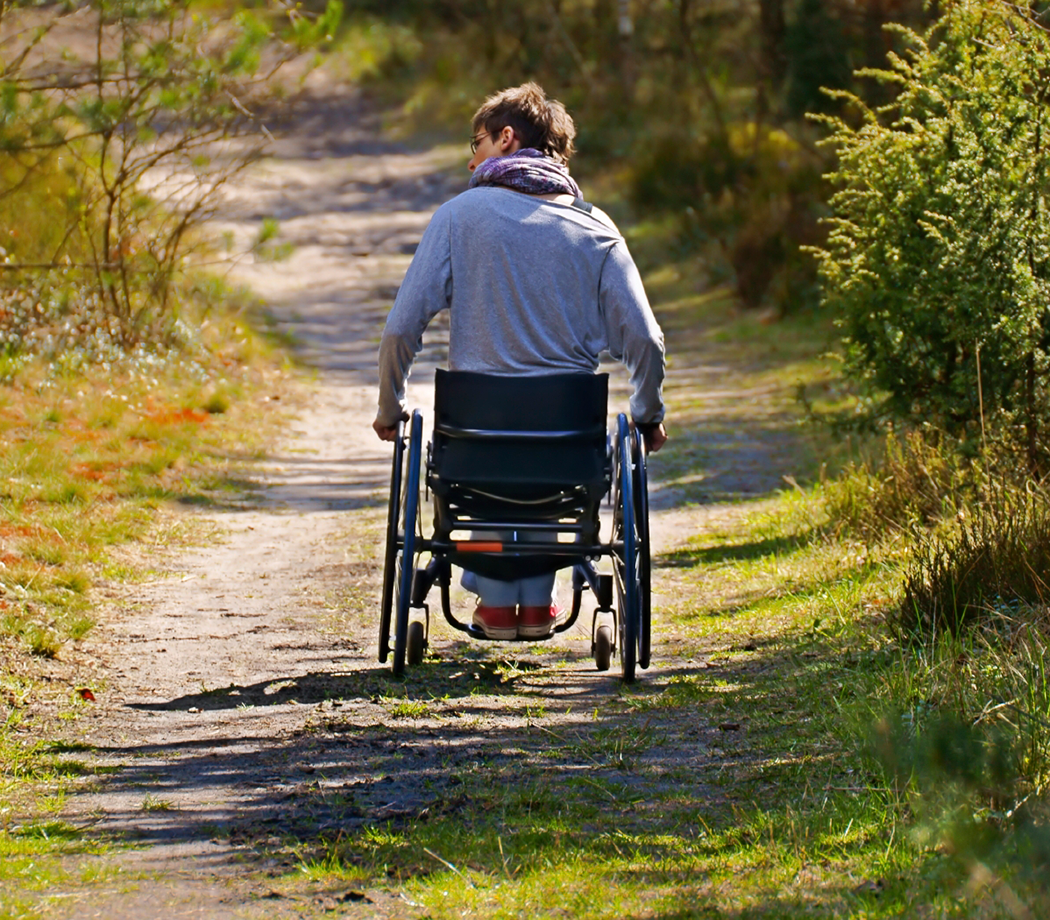
Motor neuron diseases (MNDs)
Motor neurons are the nerve cells that control the muscles we use to walk, breathe, speak, and move our limbs.
There are two types: upper motor neurons, which send signals from our brain down to our spinal cord; and lower motor neurons, which get those signals and send them to our muscles. MNDs are diseases that damage these cells over time.
Upper motor neuron diseases
Like primary lateral sclerosis (PLS), affect just the upper motor neurons. This makes muscles stiff and spastic.
Lower motor neuron diseases
like spinal muscular atrophy (SMA), affect only the lower motor neurons. This makes muscles floppy or flaccid, which makes them weak and sometimes causes them to twitch uncontrollably.
The most common motor neurons disease is amyotrophic lateral sclerosis (ALS or Lou Gehrig’s disease), which affects both upper and lower neurons.
Periodic paralysis
This is caused by changes in certain genes. It involves random attacks of paralysis, often triggered by something in the person’s diet. Typically, it is an electrolyte abnormality, like hypo or hyperkalemia.
Sleep paralysis
This happens while a person waking up or falling asleep. Sometimes patients who have sleep paralysis will also has hallucination.
Bell’s palsy
This makes half of the face appear to droop. It could be caused by certain viruses.
Todd’s paralysis
This often happens for a brief period after a person with epilepsy has had a seizure, usually just on one side of their body.
Tick paralysis and Lyme disease. Some ticks have neurotoxins in their spit glands that can cause paralysis, starting in feet and legs and moving upward. Once the tick is removed, the paralysis goes away, but if it’s not treated, it can spread to the face and be very serious.
Ticks sometimes also carry Lyme disease, a bacterial infection that can cause several different symptoms, including facial paralysis and numbness in arms and legs.
HTLV-1 associated myelopathy
Also called tropical spastic paraparesis (TSP). This type of spastic paralysis comes on gradually after an infection with human T-cell leukemia virus type 1. It causes symptoms that are similar to multiple sclerosis, but it happens in less than 3% of people infected with the virus.
Symptoms
Paralysis is an unpredictable illness. Tetraplegia for one person may look quite different from tetraplegia in another person. Symptoms may change over time, and there is no way to fully predict how paralysis will affect a person.
In addition to movement impairments, though, some of the symptoms that commonly accompany paralysis include:
- Joint and muscle pain. When patient can’t move one portion of his/her body, the muscles that are attached to it can become stiff and painful.
- Phantom pain. Patient may feel electrical or tingling sensations in the affected area, even if he can’t move it.
- Difficulties with using the bathroom. Patient may need to use a catheter or ostomy bag.
- Changes in sexual functioning or fertility.
- Difficulty breathing without assistance.
- Changes in weight and body composition, particularly if patient is unable to exercise; this can lead to other complications, such as diabetes or high blood pressure.
- Bedsores, particularly if patient do not regularly stretch or exercise.
- Increased vulnerability to infections, particularly respiratory infections. Patient may suffer from pneumonia, bronchitis, frequent colds, and other medical ailments.
Allopathic treatment for Paralysis
Allopathically, paralysis cannot typically be cured. Instead, treatment endeavors to directly attack 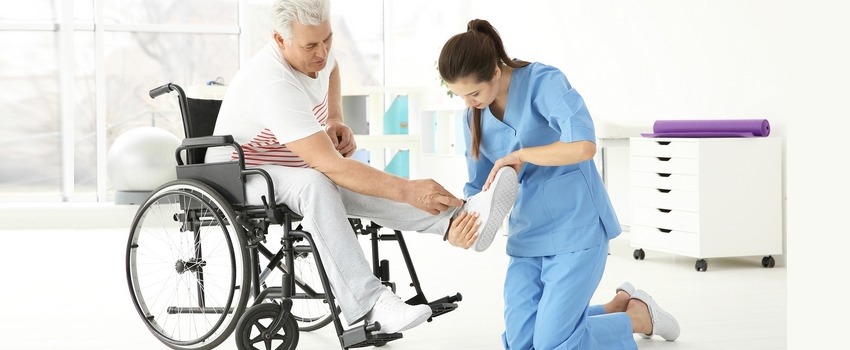 symptoms and reduce the impact of paralysis on life.
symptoms and reduce the impact of paralysis on life.
Some allopathic treatment options include:
- Surgery to address physical barriers to movement. For example, an object lodged in patient’s spinal cord or brain might need to be removed, or portions of patient’s spinal cord might need to be fused together.
- Medications to prevent infection, reduce swelling, and address symptoms such as chronic pain.
- Ongoing monitoring to ensure patient’s condition does not deteriorate.
- Medical devices to improve functioning, such as a wheelchair, artificial respirator, or catheter.
- Psychotherapy and support groups to help patient find ways to cope with his/her condition.
- Ongoing physical, exercise, and occupational therapy to help patient regain some functioning; the more practice patient gets, the more likely he/she will be able to work. Physical therapy can help rewire your brain and may even reverse some symptoms of paralysis.
- Alternative therapies. Studies have proven that Homeopathic medicines can reverse and even treat paralysis of any stage and type.
Homeopathic treatment for paralysis
Depending upon the cause (for example, transient blood loss to the brainstem), rarely, a person may recover, complete or almost complete recovery is possible. With the right therapy and the
help of compassionate family and friends, a person with paralysis can lead to a complete or 98% health and can live a happy life.
Never do experiments on your patients/loved ones.
Almost all paralysis patients recover completely or almost completely (>90%-98%).
Here are very few of medicine that are in my (Dr. Qaisar Ahmed MD, DHMS) opinion are best for paralysis patients.
1. Phosphorus:
Paralysis, Restless, fidgety. Hypo-sensitive, Vertigo, Heat from spine, Neuralgia, Burning pains. Chronic congestion of head; Brain-fag, Hippocratic face readings, ascending sensory and motor paralysis from ends of fingers and toes, Weakness and trembling, from every exertion. Locked-in syndrome. Arms and hands become numb, post-diphtheritic paralysis. Fatigue of eyes and head even without much use of eyes. Hearing difficult, especially to human voice. Re-echoing of sounds. Pale, sickly complexion; blue rings under eyes. Hippocratic countenance. Tearing pain in facial bones; circumscribed redness in one or both cheeks.
2. Mygale Lasiodora:
It is quite characteristic of the spider poisons to produce spasmodic diseases. Depressed muscles of the face twitch constantly, the mouth and eye open and close in rapid succession, patient jerks his head to one side, usually the right control over the muscle seems to be lost, If the patient attempts to put his hand to his head it is jerked backwards violently, and words are jerked out in talking, The legs are in motion while sitting, and dragged while attempting to walk. Paralysis.
Uncontrollable Movements of face, arms, and legs, involuntary head movements, throwing the head backward and then forwards are prominent, constant jerking of the head (mostly to the right side). Locked-in syndrome. Shrugging of shoulders. Difficulty in putting out tongue, grating teeth at night.
All symptoms get better during sleep and are worse in the morning.
3.Agaricus Muscarius:
 For paralysis with uncertain, unsteady Gait – Agaricus is well-indicated for cases of paralysis where an uncertain, Colic spasms when awake, quiet when asleep, Though jerking when going to sleep; spasmodic motions, from simple involuntary motions and jerks of single muscles to a dancing of the whole body, Attack crosswise ,an upper right and a lower left extremity, or vice versa, Convulsive condition of the muscles of head and neck, constantly, Extreme mobility of lower limbs and the body generally, Frequent nictitating of eyelids; twitching and spasms of eyeballs; redness of inner canthi of eyes; lachrymation. Locked-in syndrome.
For paralysis with uncertain, unsteady Gait – Agaricus is well-indicated for cases of paralysis where an uncertain, Colic spasms when awake, quiet when asleep, Though jerking when going to sleep; spasmodic motions, from simple involuntary motions and jerks of single muscles to a dancing of the whole body, Attack crosswise ,an upper right and a lower left extremity, or vice versa, Convulsive condition of the muscles of head and neck, constantly, Extreme mobility of lower limbs and the body generally, Frequent nictitating of eyelids; twitching and spasms of eyeballs; redness of inner canthi of eyes; lachrymation. Locked-in syndrome.
Body convulsed, as if a galvanic battery were applied to the spine. Ravenous appetite, but difficulty of swallowing, Cervical glands swollen; inarticulate speech, itching of eyelids and of different spots on skin, resembling chilblains; weakness and coldness of limbs; unsteady walk. Facial muscles feel stiff; twitch; face itches and burns. Lancinating, tearing pain in cheeks, as of splinters. Burning and smarting on lips. Tremulous tongue.
4. Cina:
Dilated pupils; yellow vision. Weak sight. Strabismus. Eyestrain, especially when presbyopia sets in. Pulsation of superciliary muscle. Digging and scratching in ears. Intense, circumscribed redness of cheeks. Pale, hot, with dark rings around eyes. Cold perspiration. White and bluish about the mouth. Grits teeth during sleep. Chorea movements of face and hands. Locked-in syndrome.
Cina is a helpful medicine for paralysis affecting the face and upper limbs. Involuntary movements on the face and around the eyes. Throwing of arms from side to side. The limbs are distorted with jerking and trembling. Weakness of the hands, making it difficult to hold things. Complaints usually appear on one side. Few general symptoms like irritability, screaming, striking and restless sleep may also be present.
5. Causticum:
Causticum is the next prominent medicine for managing paralysis. Causticum is most indicated when the right side of the body is more affected – the face, tongue, arm, and leg. Marked twisting and jerking of limbs. Locked-in syndrome. An unsteady gait is present with involuntary body movements Weakness of muscles.
Worsening of symptoms may be noted during the night. locked-in syndrome during pregnancy.
6. Cuprum Metalicum:
Spasmodic affections, cramps, convulsions, beginning in fingers and toes, violent, contractive, and intermittent pain. Paralysis. Locked-in syndrome. The arms and legs also feel weak, weary and lame. Muscle contractions. Jerking of hands. Can hold nothing in hand and the objects fall to the ground. Speech is affected with trembling of the tongue. Distorted, pale bluish, with blue lips. Contraction of jaws, with foam at mouth.
Choreic movements start in the muscles of the fingers and toes and extend to the limbs. The patient is better or quieter during sleep, but when awake the terrible contortions and awkward movements are excessive. Meningitis.
7. Magnesia Phos:
For Chorea or Hemiplegia and paralysis when Symptoms are Better During Sleep, Magnesia Phos is an important medicine. Locked-in syndrome. Involuntary shaking of limbs, face, mouth, and head is present. Involuntary movements of limbs along with contortions may also appear.
Sudden forward motion of the head is well-noted, jerking of the mouth and speech is also very defective.
8. Veratrum Viride:
For Chorea, paralysis or Hemiplegia when Symptoms are Worse during Sleep. Locked-in syndrome. Involuntary motions of facial muscles (face turned into horrible contortions), jerking/continual nodding of the head, jerking of arms and legs, Constant movement of the lower jaw, speech affected, with the dropping of words when speaking.
9. Secale Cor:
Secale Cor is used in cases of paralysis, chorea or Hemiplegia when the chief indication is  symptoms beginning in the face and then spreading all over the body. The symptoms may become severe and rise to dance and jumping. Locked-in syndrome. The arms and legs are in constant motion. Head movement from side to side is present, trunk in constant motion, tongue jerks out and speech becomes difficult and indistinct.
symptoms beginning in the face and then spreading all over the body. The symptoms may become severe and rise to dance and jumping. Locked-in syndrome. The arms and legs are in constant motion. Head movement from side to side is present, trunk in constant motion, tongue jerks out and speech becomes difficult and indistinct.
10. Kali Bromatum:
Violent cases of paralysis of any type, locked-in syndrome, chorea or Hemiplegia that arises from fright. Great trembling of hands (Legs and arms are affected). The gait is unsteady, irregular, and staggering (similar to a drunk person walking), facial muscles could be affected, the tongue protrudes with a jerk, and the person can barely speak. All the movements are violent.
10. Saccharum Lactis (Lactulose):
Amblyopia. Angina pectoris. Body-odor, offensive. Diabetes. Dyspepsia. Earache. Gout. Headache. Hysteria. Labia, soreness of. Nervousness. Neuralgia. Ovaries, affections of. Over-exertion. Ptosis. Sciatica. Sighing. Paralysis. Trembling of whole body. Longing and melancholy. Hysteria in evening, laughing and crying, jumping up and lying down, but could not stand. Locked-in syndrome. Left side of head felt all drawn. Inflammation and awful pain in lower limbs extending down.
11. Belladonna and Atropinum:
Atropine is an alkaloid of Belladonna (C17 H23 NO3). Belladonna acts primarily on the brain, great general sensitiveness, sensitiveness of the special senses-sensitive to light, hydrophobia, remarkable quickness of sensation and/or of motion. Paralysis. Locked-in syndrome. Melancholy with grief, hypochondriacal humor, moral dejection, and discouragement, delirium and mania with groaning, disposition to dance, to laugh, to sing, and to whistle.
Mania, with groans, or with involuntary laughter; nocturnal delirium; delirium with murmuring; delirium, during which are seen wolves, dogs, fires, &c; delirium by fits, and sometimes with fixedness of look, Stupefaction, with congestion to the head; pupils enlarged.
Delirium. Great apathy and indifference, desire for solitude, dread of society and of all noise. Repugnance to conversation. Disinclination to talk, or very fast talking. Ill-humor, disposition irritable and sensitive, with an inclination to be angry and to give offence. Folly, with ridiculous jesting, gesticulations, acts of insanity, impudent manners.
Fury and rage, with desire to strike, to spit, to bite, and to tear everything, and sometimes with growling and barking like a dog. Dejection and weakness of mind and body. Dread of all exertion and motion. Loss of consciousness. Fantastic illusions (when closing the eyes). Dementia to such an extent as no longer to know one’s friends, illusions of the senses and frightful visions. Complete loss of reason, stupidity, inadvertence, and distraction, inaptitude for thought, and great weakness of memory. Memory: quick; weak; lost.
12. Sepia:
Convulsive motions of head and limbs, when talking jerking of facial muscles, General muscular agitation; desire to change constantly place and position, Ringworm like eruptions on skin every spring;  uterine chorea with menstrual irregularities; Amelioration after menses and after a thunderstorm. Paralysis. Locked-in syndrome.
uterine chorea with menstrual irregularities; Amelioration after menses and after a thunderstorm. Paralysis. Locked-in syndrome.
13. Opium
Locked-in syndrome. Emotional chorea: trembling the head, arms and hands. Arms are thrown out at right angles with the body and spasmodic jerking of the flexors; convulsive movements of one or other arm to and fro, Twitching continue during sleep. Paralysis. Falls into a heavy stupid sleep. Profound coma. Opisthotonos. Swollen veins of neck. Painless paralysis. Twitching of limbs. Numbness. Jerks as if flexors were overacting. Convulsions; worse from glare of light; coldness of limbs.
14. Tarentula Hispanica
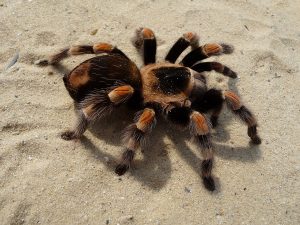 Paralysis. Locked-in syndrome, Chorea or Hemiplegia: Tarentula Hispanica indicated when the paralysis movements affect the right arm and right leg, and when the movements continue even at night, and are brought on by fright, grief, etc. restless and compelled to keep constantly in motion, the spine is sensitive, and there is trembling.
Paralysis. Locked-in syndrome, Chorea or Hemiplegia: Tarentula Hispanica indicated when the paralysis movements affect the right arm and right leg, and when the movements continue even at night, and are brought on by fright, grief, etc. restless and compelled to keep constantly in motion, the spine is sensitive, and there is trembling.
The patient can run better than he can walk, It is the remedy when diversion of the mind, especially music, relieves.
15. Zincum met:
Constant motion of the feet, which may continue during sleep, it is especially the medicine when the paralysis is brought on by suppressed eruption or by fright, The general health is involved, right side most affected, Much depression and irritability. Locked-in syndrome. Chorea.
16. Cimicifuga:
Paralysis any type and stage, locked-in syndrome, muscle pain or rheumatic joint ailments, or when reflex from uterine derangements, then Cimicifuga is the remedy, There is sensitiveness of the spine and entire muscular system, If mental depression be present it is an additional indication, Cimicifuga is especially indicated in chorea in young girls, about the age of puberty, with menstrual disorders, especially suppression of menses, Fright chorea and chorea with loss of power of swallowing indicate the remedy, Sleeplessness is an important symptom, Difficult speech, patient bites tongue when talking are good indications.
17. Cadmium Sulphuratum
Cadmium Sulphuratum is recommended for paralysis and locked-in syndrome of left side. The mouth gets distorted, with difficulty in swallowing and speaking in such cases. Unconscious. Vertigo: room and bed seem to spin around. Hammering in head. Heat in head. Distortion of mouth. Trembling of jaw. Facial paralysis. Difficult swallowing. Esophagus constricted. Salty belching. Intense nausea, with pain and cold. Stringy, offensive exudation on mucous membrane. Salty taste.
18. Baptisia Tinctoria
Wild, wandering feeling. Inability to think. Mental confusion. Ideas confused. Illusion of divided personality. Thinks he is broken or double and tosses about the bed trying to get pieces together. Locked-in syndrome. Delirium, wandering, muttering. Perfect indifference. Falls asleep while being spoken to. Melancholia, with stupor. Confused, swimming feeling. Vertigo; pressure at root of nose. Skin of forehead feels tight; seems drawn to back of head. Feels too large, heavy, numb. Soreness of eyeballs. Brain feels sore. Stupor; falls asleep while spoken to. Early deafness in typhoid conditions. Eyelids heavy.
Besotted look. Dark red. Pain at root of nose. Muscles of jaw rigid. Taste flat, bitter. Teeth and gums sore, ulcerated. Breath fetid. Tongue feels burned; yellowish-brown; edges red and shining. Dry and brown in center, with dry and glistening edges; surface cracked and sore. Can swallow liquids only, least solid food gags. Neck tired. Stiffness and pain, aching and drawing in arms and legs. Pain in sacrum.
Dark redness of tonsils and soft palate. Constriction, contraction of esophagus. Great difficulty in swallowing solid food. Painless sore throat, and offensive discharge. Contraction at cardiac orifice.
19. Arnica Montana
Fears touch, or the approach of anyone. Unconscious; when spoken to answers correctly, but  relapses. Indifference: inability to perform continuous active work; morose, delirious. Nervous; cannot bear pain; whole body oversensitive. Says there is nothing the matter with him. Wants to be let alone. Agoraphobia (fear of space). After mental strain or shock. Locked-in syndrome.
relapses. Indifference: inability to perform continuous active work; morose, delirious. Nervous; cannot bear pain; whole body oversensitive. Says there is nothing the matter with him. Wants to be let alone. Agoraphobia (fear of space). After mental strain or shock. Locked-in syndrome.
Head hot, with cold body; confused; sensitiveness of brain, with sharp, pinching pains. Scalp feels contracted. Weakness of the muscles of the neck; the head falls backwards. Chronic vertigo; objects whirl about especially when walking. Locked-in syndrome. Diplopia from traumatism, muscular paralysis, retinal hemorrhage. Bruised, sore feeling in eyes. Must keep eyes open, dizzy on closing them. Feel tired and weary after sight-seeing, moving pictures, etc.
Noises in ear caused by rush of blood to the head. Shooting in and around ears. Blood from ears. Dullness of hearing after concussion. Pain in cartilages of ears as if bruised. Pain in extremities as if from fatigue and crawling in the arms and in the hands. Painful paralytic weakness in the joints. Over-sensitiveness of the whole body.
Epistaxis after every fit of coughing, dark fluid blood. Nose feels sore; cold. Fetid breath. Dry and thirsty. Bitter taste. Taste as from bad eggs. Soreness of gums after teeth extraction. Empyema of maxillary sinus. Face sunken; very red. Heat in lips. Herpes in face.
20. Conium Maculate
Depressed, timid, averse to society, and afraid of being alone. No inclination for business or study; takes no interest in anything. Memory weak; unable to sustain ‘any mental effort. Vertigo, when lying down, and when turning over in bed, when turning head sidewise, or turning eyes; worse, shaking head, slight noise or conversation of others, especially towards the left. Headache, stupefying, with nausea and vomiting of mucus. Paralysis. Locked-in syndrome. Tightness as if both temples were compressed, worse after a meal. Bruised, semi lateral pains. Dull occipital pain on rising in morning. Extremities heavy, weary, paralyzed; trembling; bands unsteady; fingers and toes numb. Muscular weakness, especially of lower extremities. Perspiration of hands. Putting feet on chair relieves pain.
Photophobia and excessive lachrymation. Corneal pustules. Dim-sighted; worse, artificial light. On closing eyes, he sweats. Paralysis of ocular muscles. In superficial inflammations, as in phlyctenule conjunctivitis and keratitis. The slightest ulceration or abrasion will cause the in tensest photophobia. Defective hearing; discharge from ear blood colored.
21. Gelsemium Sempervirens
Desire to be quiet, to be left alone. Dullness, languor, listless. “Discerning are lethargies.” Apathy regarding his illness. Absolute lack of fear. Delirious on falling to sleep. Emotional excitement, fear, etc. lead to bodily ailments. Bad effects from fright, fear, exciting news. Paralysis. Locked-in syndrome. Vertigo, spreading from occiput. Headache, with muscular soreness of neck and shoulders. Headache preceded by blindness; better, profuse urination. Delirious on falling asleep.
Eyes: Ptosis; eyelids heavy; patient can hardly open them. Double vision. Disturbed muscular apparatus. Corrects blurring and discomfort in eyes even after accurately adjusted glasses. Vision blurred, smoky. Dim-sighted; pupils dilated and insensible to light. Orbital neuralgia, with contraction and twitching of muscles. Bruised pain back of the orbits. One pupil dilated, the other contracted. Deep inflammations, with haziness of vitreous. Serous inflammations. Albuminuric retinitis. Detached retina, glaucoma and descemetitis. Hysterical amblyopia.
Neuralgia of face. Dusky hue of face, with vertigo and dim vision. Facial muscles contracted, especially around the mouth. Chin quivers. Lower jaw dropped. Putrid taste and breath. Tongue numbs, thick, coated, yellowish, tremble, paralyzed. Difficult swallowing, especially of warm food. Itching and tickling in soft palate and Naso-pharynx. Pain in sterno-cleidoic-mastoid, back of parotid.
Post-diphtheritic paralysis. Tonsillitis; shooting pain into ear. Feeling of a lump in throat that cannot be swallowed. Aphonia. Swallowing causes pain in ear. Difficult swallowing. Pain from throat to ear. Loss of power of muscular control. Cramp in muscles of forearm. Professional neuroses. Excessive trembling and weakness of all limbs. Hysteric convulsions. Fatigue after slight exercise. Complete relaxation of the whole muscular system.
22. Plumbum Metallicum
Weakness and tingling sensation in lower limbs which ascends to the upper part of the body, paralysis is chiefly of extensors, forearm or upper limb, from center to periphery with partial anesthesia or excessive hyperesthesia, preceded by pain. Localized neuralgic pains, neuritis.
Progressive muscular atrophy. Infantile paralysis. Locomotor ataxia. Excessive and rapid emaciation. Bulbar paralysis. Important in peripheral affections. The points of attack for Plumbum are the neuraxins and the anterior horns. Symptoms of multiple sclerosis, posterior spinal sclerosis. Contractions and boring pain. All the symptoms of acute.
The blood, alimentary and nervous systems are the special seats of action of Plumbum. Hematosis is interfered with, rapid reduction in number of red corpuscles, hence pallor, icterus, anemia. Constrictive sensation in internal organs. 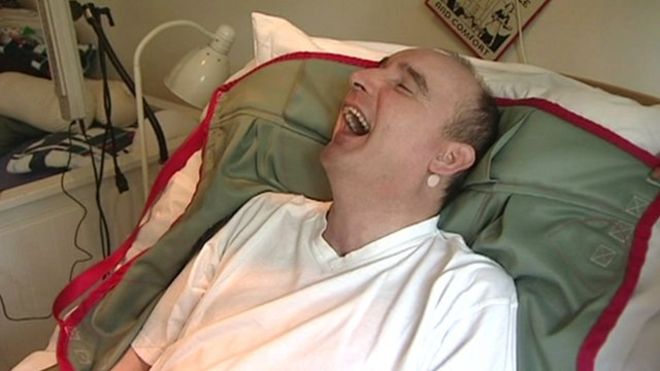
Delirium, coma and convulsions. Hypertension and arteriosclerosis. Progressive muscular atrophy. Infantile paralysis. Locomotor ataxia. Excessive and rapid emaciation. Bulbar paralysis. Important in peripheral affections. The points of attack for Plumbum are the neuraxins and the anterior horns. Symptoms of multiple sclerosis, posterior spinal sclerosis. Contractions and boring pain.
Fear of being assassinated. Depression. Quiet melancholy. Slow perception; loss of memory; amnesic aphasia. Hallucinations and delusions. Intellectual apathy. Memory impaired. Paretic dementia. Delirium alternating with colic. Tinnitus. Pupils contracted. Yellow. Optic nerve inflamed. Intraocular, suppurative inflammation. Glaucoma, especially if secondary to spinal lesion. Optic neuritis, central scotoma. Sudden loss of sight after fainting.
Face pale and cachectic. Yellow, corpse-like; cheeks sunken. Skin of face greasy, shiny. Tremor of Naso-labial muscles. Tongue tremulous, red on margin. Cannot put it out, seems paralyzed. Paralysis of single muscles. Cannot raise or lift anything with the hand. Extension is difficult. Paralysis from overexertion of the extensor muscles in piano players. Pains in muscles of thighs; come in paroxysms. Wrist-drop. Cramps in calves. Stinging and tearing in limbs, also twitching and tingling, numbness, pain or tremor. Paralysis. Feet swollen. Pain in atrophied limbs alternates with colic. Loss of patellar reflex. Hands and feet cold. Pain in right big toe at night, very sensitive to touch.
23. Curare
Muscular paralysis without impairing sensation and consciousness. Paralysis of respiratory muscles. Reflex action diminished. Debility of the aged and from loss of fluids. Catalepsy. Nervous debility. Trismus. Glycosuria with motor paralysis. Curare decreases the output of adrenaline. Vomiting of bile in cirrhosis of liver. Indecision; no longer wishes to think, or act for herself.
Lancinating pains all over head. Head drawn backward. Falling out of hair. Brain feels full of fluid. Facial and buccal paralysis. Tongue and mouth drawn. Red face. Tongue and mouth drawn to right. Sharp, stitching pains over eye. Black spots before vision. Ptosis.
Noises in ears; unbearable earache. Lancinating pains start from ears, extending down to legs. Swelling of lobes of ear. Tired pain up and down spine. Locked-in syndrome, arms weak, heavy. Cannot lift the fingers. Weakness of hands and fingers in pianists. Legs tremble; give way in walking. Debility; paralysis. Catalepsy. Favors development of corns. Reflexes lessened or abolished.
24. Oxalicum Acidum
Gastro-enteritis, motor paralysis, collapse, stupor and death. Influences the spinal cord and produces motor paralysis. Locked-in syndrome. Pains very violent, in spots worse, motion, and thinking of them. Periodical remissions. Spasmodic symptoms of throat and chest. Sense of heat in head. Confusion and vertigo. Headache, before and during stool. Severe pain in eyes; feel expanded. Hyperesthesia of retina.
Locked-in syndrome. Nervous aphonia with cardiac derangement. Burning sensation from throat down. Breathing spasmodic, with constriction of larynx and chest. Hoarseness. Aphonia. Paralysis of the tensors of vocal cord. Dyspnea; short, jerking inspirations. Sharp pain through lower region of left lung, extending down to epigastrium.
Palpitation and dyspnea in organic heart disease; worse, when thinking of it. Pulse feeble. Heart symptoms alternate with aphonia, angina pectoris; sharp, lancinating pain in left lung coming on suddenly, depriving of breath. Precordial pains which dart to the left shoulder. Aortic insufficiency.
Extremities: Numb, weak, tingling. Pains start from spine and extend through extremities. Drawing and lancinating pains shooting down extremities. Backache; numb, weak, Myelitis. Muscular prostration. Wrist painful, as if sprained. Lower extremities blue, cold, insensible. Sensation of numbness. Multiple cerebral and posterior spinal sclerosis. Lancinating pains in various parts; jerking pains.
25. Picric Acid
Degeneration of the spinal cord, with paralysis. Acts upon the generative organs probably through the lumbar centers of the spinal cord; prostration, weakness and pain of back, pins and needle sensation in extremities. Neurasthenia. Muscular debility. Heavy tired feeling. Myelitis with spasms and prostration. Writer’s palsy. Progressive, pernicious anemia. Uremia with complete anuria. A one per cent solution applied on lint, is the best application for burns until granulations begin to form. Sallow complexion. Locked-in syndrome. 
Lack of will-power; disinclined to work. Cerebral softening. Dementia with prostration, sits still and listless. Occipital pain; worse, slightest mental exertion. Vertigo and noises in ear. After prolonged mental strain, with anxiety and dread of failure at examination. Brain fag.
Chronic catarrhal conjunctivitis with copious, thick yellow discharge. Burning along spine. Great weakness. Tired, heavy feeling all over body, especially limbs; worse, exertion. Feet cold. Cannot get warm. Acute descending paralysis. Degeneration of the spinal cord, with paralysis. Brain fag and sexual excitement. Acts upon the generative organs probably through the lumbar centers of the spinal cord; prostration, weakness and pain of back, pins and needle sensation in extremities. Neurasthenia. Muscular debility. Heavy tired feeling. Myelitis with spasms and prostration. Writer’s palsy. Progressive, pernicious anemia. Uremia with complete anuria. Sallow complexion.
26. Nux Vomica
Very irritable: sensitive to all impressions. Ugly, malicious. Cannot bear noises, odors, light, etc. Does not want to be touched. Time passes too slowly. Even the least ailment affects her greatly. Disposed to reproach others. Sullen, fault-finding. Headache in occiput or over eyes, with vertigo; brain feels turning in a circle. Over sensitiveness. Vertigo, with momentary loss of consciousness. Photophobia; worse in morning. Smarting dry sensation in inner canthi. Infra-orbital neuralgia, with watering of eyes. Optic nerve atrophy, from habitual use of intoxicants. Paresis of ocular muscles; worse, tobacco and stimulants. Orbital twitching radiating towards the occiput, Optic neuritis. Locked-in syndrome.
Itching in ear through Eustachian tube. Auditory canal dry and sensitive. Otalgia; worse in bed. Hyperesthesia of auditory nerves; loud sounds are painful and anger him. Jaws, contracted. Small aphthous ulcers, with bloody saliva. First half of tongue clean; posterior covered with deep fur; white, yellow, cracked edges. Teeth ache; worse, cold things. Gums swollen, white, and bleeding.
Throat: Rough, scraped feeling. Tickling after waking in morning. Sensation of roughness, tightness, and tension. Pharynx constricted. Uvula swollen. Stitches into ear.
Backache in lumbar region. Burning in spine; worse, 3 to 4 am. Servico-brachial neuralgia; worse, touch. Must sit-up in order to turn in bed. Bruised pain below scapulae. Sitting is painful. Arms and hands go to sleep. Paresis of arms, with shocks. Legs numb; feel paralyzed; cramps in calves and soles. Partial paralysis, from overexertion or getting soaked. Drags feet when walking. Sensation of sudden loss of power of arms and legs in the morning.
27. Cocculus Indicus
Spasmodic and paretic affections, notably those affecting one-half of the body. Affects the cerebrum but will not cure convulsive seizures proceeding from the spinal cord. Painful contracture of limbs and trunk, tetanus. Sensation of hollowness, or emptiness, as if parts had gone to sleep. Feels too weak to talk loudly.
Mind capricious. Heavy and stupid. Time passes too quickly; absorbed in reveries. Inclination to sing irresistible. Slow of comprehension. Mind benumbed. Profound sadness. Cannot bear contradiction. Speaks hastily. Vertigo, nausea. Pupils contracted. Opening and shutting sensation, especially in occiput. Trembling of head. Pain in eyes as if torn out of head.
Locked-in syndrome. Paralysis of facial nerve. Cramp-like pain in masseter muscle; worse, opening mouth. Prosoplasia in afternoon, with wide radiations of pain. Cracking of cervical vertebrae when moving head. Paralytic pain in small of the back. Pain in shoulder and arms as if bruised. Pressure in scapula and nape. Stiffness on moving shoulders. 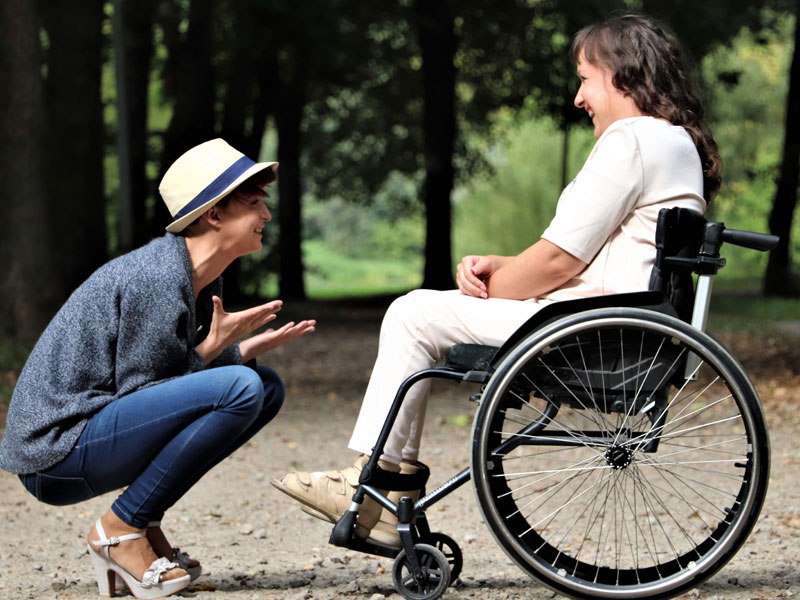
Extremities: Lameness; worse by bending. Trembling and pain in limbs. Arms go to sleep. One-sided paralysis; worse after sleep. Hands are alternately hot and cold; numbness and cold sweat now of one, now of the other hand. Numb and unsteady. Knees crack on motion. Lower limbs very weak. Inflammatory swelling of knee. Intensely painful, paralytic drawing. Limbs straightened out, painful when flexed.
28. Stannum Metallicum
Chief action is centered upon the nervous system and respiratory organs. Debility, especially the debility of chronic bronchial and pulmonary conditions. Paralysis. Paralytic weakness; spasms; paralysis. Locked-in syndrome. Sad, anxious. Discouraged. Dread of seeing people. Aching in temples and forehead. Obstinate acute coryza and influenza with cough. Pain worse motion; gradually increasing and decreasing as if constricted by a band; forehead feels pressed inwards. Jarring of walking resounds painfully in head. Drawing pains in malar bones and orbits.
Throat dry and stings. Paralytic weakness; drops things. Ankles swollen. Limbs suddenly give out when attempting to sit down. Dizziness and weakness when descending. Spasmodic twitching of muscles of forearm and hand. Fingers jerk when holding pen. Neuritis. Typewriters’ paralysis.
29. Lathyrus Sativus
Affects the lateral and anterior columns of the cord. Reflexes always increased. Paralytic affections of lower extremities; spastic paralysis; lateral sclerosis; Beri-Beri. Athetosis. Infantile paralysis. After influenza and wasting, exhaustive diseases where there is much weakness and heaviness, slow recovery of nerve power. Sleepy, constant yawning. Paralysis. Locked-in syndrome. Depressed. Vertigo when standing with eyes closed.
Burning pain in tip of tongue; with tingling and numbness of tongue and lips, as if scalded. Tips of fingers numb. Tremulous, tottering gait. Excessive rigidity of legs; spastic gait. Knees knock against each other when walking. Rheumatic paralysis. Gluteal muscles and lower limbs emaciated. Legs blue; swollen, if hanging down. Stiffness and lameness of ankles and knees, toe do not leave the floor, heels do not touch floor, Muscles of calves very tense. Patient sits bent forward, straightens with difficulty. Tips of fingers numb. Tremulous, tottering gait. Excessive rigidity of legs; spastic gait. Knees knock against each other when walking.
30. Oleander
Oleander has a marked action on the skin, heart and nervous system, curing paralytic conditions with cramp-like contractions of upper extremities. Hemiplegia. Paralysis. Difficult articulation. Memory weak; slow perception. Melancholy, with obstinate constipation.
Vertigo and diplopia, when looking down. Vertigo, when looking fixedly at an object, and on rising in bed. Pain in brain. Numb feeling. Dull, unable to think. Indolence. Eruption on scalp. Humid, fetid spots behind ears and occiput, with red, rough, herpetic spots in front. Corrosive itching on forehead and edge of hair; worse, heat.
Can see objects only when looking at them sideways. Eyes water on reading. Double vision. Sensation as if eyes were drawn back into the head.
Face pale, sunken, with blue rings around eyes. Vomiting of food; greenish water. Throbbing in pit. Ineffectual urging. Undigested feces. Stool passes when emitting flatus. Burning pain in anus.
Asthmatic when lying down. Palpitation, with weakness and empty feeling in chest. Dyspnea. Obtuse stitches in chest.
Weakness of lower limbs. Paralysis of legs and feet. Want of animal heat in limbs. Cold feet. Painless paralysis. Constant cold feet. Swelling, burning stiffness of fingers. Veins and hands swollen. Edema. Stiffness of joints. Skin sensitive and numb. Nocturnal burning. Very sensitive skin.
31. Lathyrus Sativus
Affects the lateral and anterior columns of the cord. Reflexes always increased. Paralytic affections of lower extremities; spastic paralysis; lateral sclerosis; Beri-Beri. Athetosis. Infantile paralysis. After influenza and wasting, exhaustive diseases where there is much weakness and heaviness, slow recovery of nerve power. Sleepy, constant yawning. Depressed; hypochondriacal. Vertigo when standing with eyes closed. Burning pain in tip of tongue; with tingling and numbness of tongue and lips.
Tips of fingers numb. Tremulous, tottering gait. Excessive rigidity of legs; spastic gait. Knees knock against each other when walking. Cramps in legs worse cold, and cold feet. Cannot extend or cross legs when sitting. Myelitis, with marked spastic symptoms. Rheumatic paralysis. Gluteal muscles and lower limbs emaciated. Legs blue; swollen, if hanging down. Stiffness and lameness of ankles and knees, toe do not leave the floor, heels do not touch floor, Muscles of calves very tense. Patient sits bent forward, straightens with difficulty.
Increased bladder reflex. Frequent, must hurry, else voided involuntarily.
32. Oxytropis Lamberti
Marked action on nervous system. Trembling, sensation of emptiness. Walks backwards. Congestion of spine and paralysis. Pains come and go quickly. Sphincters relaxed. Staggering gait. Reflexes lost. Desires to be alone. Disinclined to work or talk. Worse, thinking of symptoms. Depression. Vertigo. Pain in maxillary bones and masseter muscles. Mouth and nose dry.
Eyesight obscured; pupils contracted; do not respond to light. Paralysis of nerves and muscles of eyes.
Stomach: Eructation with colicky pains. Epigastrium tender. Sphincter seems relaxed. Stools slip from anus, like lumps of jelly, mushy. Urging to urinate when thinking of it. Profuse flow. Pain in kidneys.
Male: No desire or ability. Pain in testicles and along spermatic cord and down thighs.
Pain along ulnar nerve. Numb feeling about spine. Staggering gait. Loss of co-ordination. Patellar tendon reflex lost. Pains come and go quickly, but muscles remain sore and stiff. Sleep restless, dreams of quarrel. 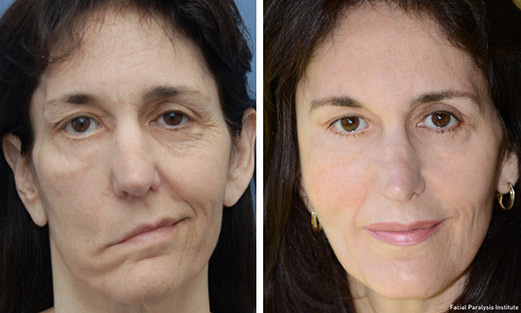
Prognosis
With allopathic treatment, the prognosis of patients with locked-in syndrome varies from fair to poor; On the other hand, with Homeopathic treatment prognosis of locked-in syndrome is very good.
Patients with allopathic supportive care (that includes development of ways to communicate with other people usually do better than those diagnosed at a later time) takes sometimes months to years later. The majority of patients with locked-in syndrome do not recover functionality with allopathic treatment, rarely, the patient may recover some basic functionality.
Paralysis is a completely Curable disease, for proper consultation and treatment, please visit our clinic.
For consultation, feel free to WhatsApp us or visit our clinic.
P. S: This article is only for doctors having good knowledge about Homeopathy and allopathy, for learning purpose(s).
For proper consultation and treatment, please visit our clinic.
Location, address and contact numbers are given below.
None of above-mentioned medicine(s) is/are the full/complete treatment, but just hints for treatment; every patient has his/her own constitutional medicine.
To order medicine by courier, please send your details at WhatsApp– +923119884588
 Dr. Sayyad Qaisar Ahmed (MD {Ukraine}, DHMS), Abdominal Surgeries, Oncological surgeries, Gastroenterologist, Specialist Homeopathic Medicines.
Dr. Sayyad Qaisar Ahmed (MD {Ukraine}, DHMS), Abdominal Surgeries, Oncological surgeries, Gastroenterologist, Specialist Homeopathic Medicines.
Senior research officer at Dnepropetrovsk state medical academy Ukraine.
Location: Al-Haytham clinic, Umer Farooq Chowk Risalpur Sadder (0923631023, 03119884588), K.P.K, Pakistan.
Find more about Dr Sayed Qaisar Ahmed at:
https://www.youtube.com/Dr Qaisar Ahmed
https://www.facebook.com/dr.qaisar.dixecosmetics
